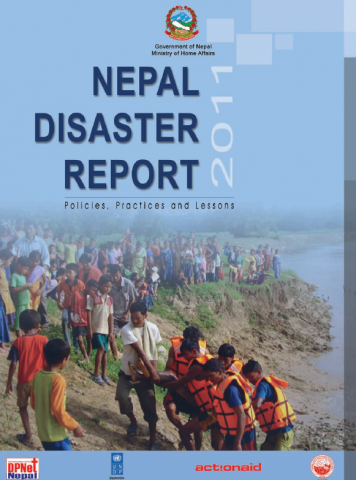Nepal Disaster Report 2011: Policies, Practices, and Lessons


This report is a compendium of understanding, concepts, experiences and lessons of disaster risk management (DRM) and emergency response planning and capacity building in Nepal. It reflects the status of DRM in Nepal including peoples’ aspiration and portrays the efforts made by people and agencies – the government at the central and local levels, the international development partners, the civil society and national private businesses, and the people at the ward, tole (neighborhood) and community levels, to mitigate disaster vulnerabilities.
Thus, this document is a compilation of facts of disaster occurrence and the efforts made in Nepal in reducing the impact of the disasters and preparing for future events.

